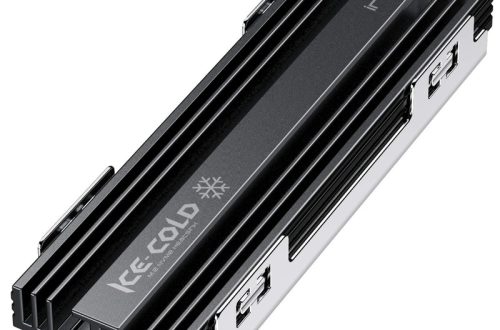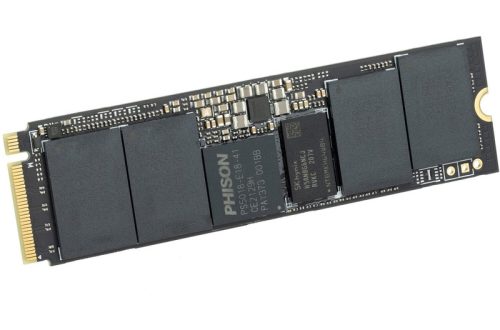Upgrading your computer’s CPU can breathe new life into your system, but occasional hiccups can occur during the process. What is ftpm/psp? One such hurdle you might encounter is the “FTPM/PSP NV corrupted or FTPM/PSP NV structure changed” error message. New cpu installed ftpm/psp nv corrupted. This article equips you with the knowledge to tackle this issue effectively, providing a roadmap through troubleshooting steps and potential solutions.
Part 1: Understanding FTPM/PSP NV Corruption
FTPM and PSP Explained:
The Firmware Trusted Platform Module (FTPM) and Platform Security Processor (PSP) are pivotal security features interwoven within modern CPUs, playing a crucial role in fortifying system security and protecting sensitive data. These components collaborate to generate encryption keys, harness secure boot functionalities, and oversee various security measures to safeguard the integrity and confidentiality of the system. The FTPM integrates closely with the CPU and system firmware to facilitate secure cryptographic operations and ensure the secure storage of sensitive data. Ftpm/psp nv corrupted? On the other hand, the PSP, also known as “fTPM” or “fTPM2.0,” serves as a separate security co-processor embedded within the CPU, contributing to the execution of critical security-related tasks. Together, these integrated security features establish a robust foundation for protecting against potential threats, enabling secure boot processes, and reinforcing the overall security posture of the system.
NV Corruption and Its Impact:
“NV” denotes Non-Volatile memory, a type of memory that retains stored data and configuration settings even when the computer is powered off. The integrity of Non-Volatile memory is essential, as any corruption within this storage can lead to inconsistencies between the old CPU’s FTPM/PSP settings and the new CPU’s requirements. This mismatch can trigger the error message you might encounter when attempting to install a new CPU, compelling the system to prompt for a reset of FTPM/PSP settings. Due to the persistent nature of Non-Volatile memory, errors or discrepancies stored within it can persist across system reboots, potentially impacting the functionality and compatibility of the CPU and associated security features. Therefore, addressing and rectifying issues within the Non-Volatile memory is crucial for maintaining the optimal functioning and stability of the system, ensuring that it aligns with the requirements of the new CPU and security protocols.
Part 2: Assessing the Situation – Before You Reset
BitLocker and Encryption Concerns:
New cpu installed ftpm/psp nv corrupted or ftpm/psp nv structure changed? If you have activated encryption software such as BitLocker on your system, it’s essential to be mindful of the potential implications when resetting FTPM/PSP. Doing so can lead to your data becoming inaccessible without a recovery key. Therefore, before proceeding with any reset actions, it is crucial to take precautionary measures.
Prior to initiating the reset process, ensure that you have a sufficient backup of your data, thereby safeguarding critical information from potential loss or corruption. Additionally, it is highly advisable to have the recovery key readily available if encryption is active, as this key can be instrumental in restoring access to your data in the event of any unforeseen complications resulting from the reset. By proactively addressing these considerations and ensuring the availability of backups and recovery keys, users can navigate potential challenges associated with resetting FTPM/PSP, ultimately safeguarding their important data and system functionality.
Consider Alternative Solutions in 2024:
Depending on your motherboard and BIOS version, an alternative to resetting FTPM/PSP is to clear the CMOS (Complementary Metal-Oxide Semiconductor) memory. Clearing the CMOS effectively resets all BIOS settings to their default values, providing a potential resolution for the issue without affecting encryption settings. This approach may address discrepancies with the CPU and motherboard compatibility, allowing the system to operate smoothly without affecting encrypted data. It’s important to note, however, that clearing the CMOS also resets other BIOS configurations, including those unrelated to the FTPM/PSP issue. As such, it’s crucial to exercise caution when opting for this method, as it can have broader implications on system settings. Before proceeding, it is advisable to carefully consider the potential consequences, back up critical data, and understand the specific impact that clearing the CMOS may have on your system’s functionality and settings.
Part 3: Resetting FTPM/PSP – A Solution with Cautions
The Reset Process:
When encountering an error message related to the FTPM/PSP on a motherboard, most systems typically prompt users with the option to reset this component. Generally, pressing “Y” or a similar designated key initiates the reset process. This action clears the existing configuration, effectively allowing the new CPU to establish its own FTPM/PSP settings upon the next system boot. new cpu installed ftpm/psp nv corrupted? By resetting the FTPM/PSP, any potential conflicts or discrepancies between the existing configuration and the new CPU are resolved, ensuring a seamless transition and optimal functionality for the updated hardware. This process essentially enables the motherboard to adapt to the new CPU by clearing any previous settings that could impede compatibility and performance. Consequently, executing the reset action preempts potential issues and paves the way for the successful integration and operation of the new CPU within the system.
Post-Reset Considerations:
When resetting the FTPM/PSP, it’s important to consider potential ramifications and follow specific protocols. After resetting this component, you may need to revisit your system settings. This typically involves re-enabling secure boot to ensure the integrity of the boot process and operating system. Additionally, there is a possibility that you may need to reinstall the operating system if the encryption settings were incompatible or if the reset disrupts system functionality. However, it’s important to exercise caution as resetting the FTPM/PSP can potentially render encrypted data inaccessible without a recovery key. Therefore, it’s advisable to have appropriate backup measures in place to safeguard critical data and encryption keys, which can be instrumental in preventing data loss and ensuring data security. By being mindful of these considerations, users can navigate the process of resetting FTPM/PSP while minimizing potential data loss and system disruptions.
Part 4: Preventing Future Occurrences
BIOS Updates:
Keeping your motherboard’s BIOS updated ensures compatibility with newer CPUs and potentially addresses known issues related to FTPM/PSP functionality. Check your motherboard manufacturer’s website for the latest BIOS updates and instructions on how to flash your BIOS.
Data Backups and Encryption Management:
Regularly back up your crucial data and consider the implications of using encryption before upgrading your CPU. If encryption is essential, ensure you have a readily accessible recovery key to avoid potential data access issues in case of FTPM/PSP resets.
By understanding the cause of the FTPM/PSP NV corruption error and following the outlined troubleshooting steps, you can navigate this hurdle effectively and successfully complete your CPU upgrade. Remember, prioritizing data security and keeping your BIOS updated are crucial aspects of a smooth CPU upgrade experience.

Advanced Troubleshooting
New cpu installed ftpm/psp nv corrupted. If the initial steps do not rectify the problem, consider the following more advanced measures:
- Secure Boot Configuration: Disable Secure Boot in the BIOS settings temporarily. Sometimes, Secure Boot can interfere with the new CPU’s initialization process due to changed security certificates.
- TPM Recovery: Attempt to recover or reset the TPM module. Depending on your system, this may involve entering a recovery mode, clearing ownership, or reflashing the TPM firmware.
- BIOS Restoration: In severe cases, restoring the BIOS to its factory defaults using a USB flash drive and the motherboard manufacturer’s BIOS restoration tool may be necessary.
-
Professional Assistance: If all else fails, it might be time to seek assistance from a professional technician or contact your motherboard/CPU manufacturer’s support team. They can provide detailed guidance tailored to your specific hardware configuration.
Preventive Measures for Future Upgrades
To avoid such complications in future upgrades:
- Thoroughly research compatibility before purchasing a new CPU.
- Always perform a BIOS update prior to installing new hardware.
- Maintain a backup of important data and settings before undertaking significant hardware changes.
Navigating through the FTPM/PSp NV corruption issue after a CPU swap can be a daunting task, but with patience, the right resources, and adherence to proper procedures, you can overcome this obstacle and enjoy the fruits of your upgrade endeavor.

The Importance of fTPM and Security
The fTPM plays a crucial role in safeguarding your system’s security. It enables features like BitLocker encryption, which protects your data from unauthorized access. When you encounter the “fTPM/PSP NV corrupted” error, it’s essential to address it promptly to ensure your system remains secure.
Firmware updates for your motherboard’s BIOS or the fTPM itself can improve compatibility with new hardware and address potential security vulnerabilities. It’s a good practice to check for firmware updates regularly and apply them as needed.








